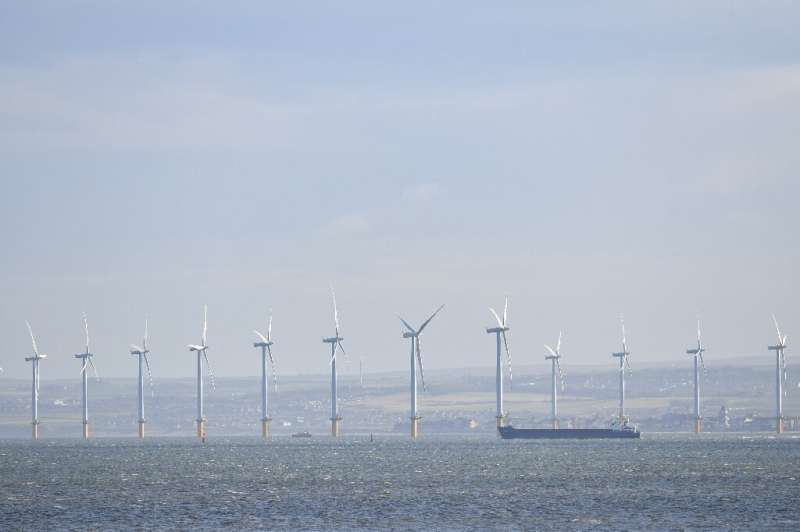UK looks to offshore wind for green energy transition

Britain, a global leader in offshore wind energy, plans to make the sector one of the pillars of its transition to carbon neutrality in the coming decades.
The country aims to quadruple its offshore electricity production capacity by 2030 by utilising the windswept North Sea and a favourable policy environment.
"It's more conducive to build offshore in the UK than anywhere else in Europe," said James Brabben, of Cornwall Insight energy consultancy.
"There's quite a consensus of support around offshore wind from the public and politics," he told AFP.
Prime Minister Boris Johnson's government, returned to power with a thumping majority last month, pledged in its election manifesto to increase power from offshore wind from 10 to 40 gigawatts this decade.
It wants Britain to be carbon neutral by 2050, with onshore wind, solar, hydro and biomass also set to contribute to its energy mix.
The country already produces almost 40 percent of its electricity from renewable sources, according to figures published last week for the third quarter of 2019.
Planned expansions
Britain plans to favour the development of colossal offshore wind farms given the country's relatively small land mass.
There were 38 operational sites comprising around 2,000 turbines at the end of 2018, according to the last available figures from the Crown Estate, the hereditary land and property portfolio of the royal family which owns most of Britain's seabed.
Nearly 1,000 more turbines are already in the planning stages.
Two of the biggest projects are Walney Extension, in north Wales, and London Array, at the mouth of the River Thames.
The two sites are home to the highest concentration of British offshore farms, thanks to the windy weather conditions created by their geography.
Several other projects are also under way, including at Hornsea and Dogger Bank off the coast of Yorkshire, which will compete for the title of largest offshore wind turbine field in the world.
Johnson has also touted rolling out floating wind farms, which utilise cutting-edge technology still being developed, to tap into windy marine areas with deeper seabeds.
Maritime wind farms have not proved universally popular among residents when visible from the shore, while some NGOs have concerns over the impact on marine mammals and migratory birds.
'Sustainable technology'
The sector is also trying to account for the so-called "global cost" of building and running a wind turbine on the planet.
Danish manufacturer Vestas has estimated it takes between five and 12 months of use to offset the energy cost of a turbine, the difference depending on the model and wind conditions.
"As turbines repay their entire carbon footprint in such a short space of time, they are excellent examples of sustainable technology in action," Robert Norris, of industry trade association RenewableUK, told AFP.
Alastair Dutton, who heads a task force at the Global Wind Energy Council (GWEC) industry group, believes bigger investment in technological innovation is needed "to further increase their sustainability".
He expects that will allow turbine producers to "move away from carbon intensive raw earth materials and implement the highest level possible of recycling to insert wind within the circular economy".
Offshore wind power had a record year in 2019, with the completion of projects off the coasts of China, Taiwan, Britain and the Netherlands, among others.
The International Energy Agency (IEA) has highlighted the almost "unlimited potential" of offshore wind power, as production costs fall and technological progress increases turbines' power and efficiency.
© 2020 AFP


















